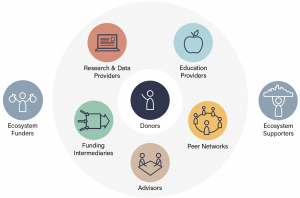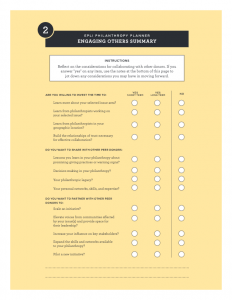Engaging Others
-
2.1 Learn more about effective philanthropy
There is a wide range of reading material beyond this toolkit available for donors to learn more about effective philanthropy and the social sector. It can supplement your navigation of the toolkit and allow you to engage more deeply with your philanthropy.
Below is a list of Stanford PACS-affiliated reading materials for donors. For additional non-PACS resources, see Additional Resources: Section 2 at the end of this toolkit.
Stanford Social Innovation Review (SSIR) by Stanford PACS SSIR is a magazine and website written by and for social change leaders from around the world and from all sectors of society— nonprofits, foundations, business, government, and engaged citizens. With print and online articles, webinars, conferences, and podcasts, SSIR bridges research, theory, and practice on a wide range of topics, including effective philanthropy practices, human rights, impact investing, and nonprofit business models. ssir.org
The Stanford PACS Guide to Effective Philanthropy by EPLI and various contributors (2020)
This book was developed to help emerging philanthropists improve their philanthropic practice. It addresses many of the topics in this toolkit in more depth, and includes additional chapters relevant to understanding the nonprofit sector.
Money Well Spent: A Strategic Plan for Smart Philanthropy by Paul Brest and Hal Harvey (2011) Published by Stanford Business Books, an Imprint of Stanford University Press
This book explains how to create and implement a strategy that ensures meaningful results.
Giving 2.0: Transform Your Giving by Laura Arrillaga-Andreessen (2011) Published by Jossey-Bass
This book offers practical tools and ideas to guide your giving journey and is accompanied by a discussion guide for educators and giving circle members to further engage with the material.
Just Giving: Why Philanthropy Is Failing Democracy and How It Can Do Better by Rob Reich (2018) Published by Princeton University Press
This book investigates the ethical and political dimensions of philanthropy and considers how giving might better support democratic values and promote justice.
-
2.2 Seek Advice From Professionals
In the Stanford PACS Philanthropist Resource Directory (PRD), there are two categories of philanthropy professionals and issue area experts that donors can learn from: philanthropic advisors and funding intermediaries.
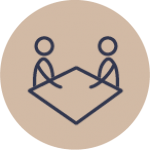
PHILANTHROPIC ADVISORS provide specialized assistance with developing philanthropic strategy, setting up your giving vehicles, and carrying out specific gifts.
Advisors trained to give philanthropic advice can also help you develop a tax strategy to integrate philanthropy into your overall wealth planning. Advisors may be associated with independent consultancies, financial advisory firms, law firms, or banks. The PRD has included financial advisory firms and private banks with formal philanthropic advising services, as well as designated philanthropy advisory firms with three or more staff.

FUNDING INTERMEDIARIES collect contributions from donors and distribute them to nonprofit organizations. The PRD lists those funding intermediaries that have specific programs to engage high-capacity donors. Intermediaries include some community foundations, other types of public foundations, funder collaboratives, donor advised fund management organizations, and other similar models.
A common example of funding intermediaries are community foundations. Community foundations usually operate in specific geographic areas and provide support to donors and nonprofit organizations in their locales. These organizations provide donors with information and structures that make it easier to distribute resources in a particular geography (and, often, beyond) while also avoiding the administrative and legal costs of setting up independent foundations. Community foundations are primarily categorized in the PRD as funding intermediaries, but they can also be good places to learn with other donors and connect with professional advisors.
-
2.3 Learn with other donors
The PRD provides two engagement categories for high-capacity donors to explore opportunities and learn in settings with other donors: education providers and peer networks.

EDUCATION PROVIDERS and affinity groups offer educational support for high-capacity donors, such as events, workshops, conferences, research, online courses, and programs. Examples include the National Center for Family Philanthropy, Indiana University Lilly Family School of Philanthropy, and the Aspen Institute’s Program on Philanthropy and Social Enterprise.
Affinity groups groups are a type of education provider involving coalitions of philanthropists or philanthropic institutions that provide educational and networking opportunities to donors with a shared interest in a particular funding area. Examples include Asian Americans/Pacific Islanders in Philanthropy, the Jewish Funders Network, or the Women Donors Network. These groups host a range of activities including in-person meetings, expert panels, and interactive workshops. Webinars and email lists or forums can provide updates on current issues or a platform to share ideas and experiences on a regular basis. Affinity groups are categorized in the PRD under Education Providers but can also fall under the second category of Peer Networks.
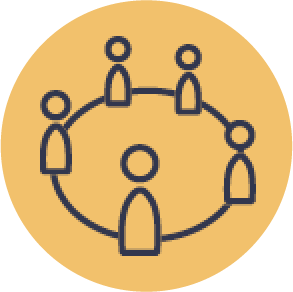
PEER NETWORKS These are organizations that manage networks of high-capacity donors. The shared knowledge from these networks can make your giving more effective.
Giving circles are a type of peer network that can be especially useful for deepening your knowledge about focus areas, contributing to pooled funds dedicated to specific issues or specific geographic areas, and making collective decisions on distributing the funds. Giving circles help participants collectively learn about philanthropy, and some also organize volunteer opportunities. Giving circles are usually hosted by a nonprofit organization, so a donor’s contribution is immediately tax deductible even if giving decisions are made later in the process. If you would like to start your own giving circle, see Additional Resources: Section 2 at the end of this toolkit.
-
2.4 Collaborate with other donors
High-capacity donors—especially those who already have significant philanthropic experience—are increasingly seeking to collaborate with others. Your contributions are likely already working alongside other funders to support an organization’s work. However, you may choose to intentionally participate in collaboration and pooled funding initiatives to increase the impact of your giving. Collaboration allows donors to combine funding, knowledge, and expertise, and can be an effective way to leverage and scale your giving.
Collaborative funding is a growing field—it has been evolving over the last fifteen years with various legal structures and models under each means of collaboration and pooled funding. Your involvement and control will vary greatly depending on an initiative’s structure. For instance, you can donate to funds that are curated by funding intermediaries, and you might be able to exert influence but have less control over giving; or you can engage in giving collectives that are donor-led, where each donor has a decision-making seat at the table.
The following spectrum outlines different ways donors can approach collaboration. If you feel you are not yet ready to collaborate, you can always revisit the possibility of collaboration in future philanthropic cycles.
SPECTRUM OF COLLABORATION
The diagram below represents four ways donors can collaborate. Note how each method of collaboration has different implications for your decision-making autonomy.
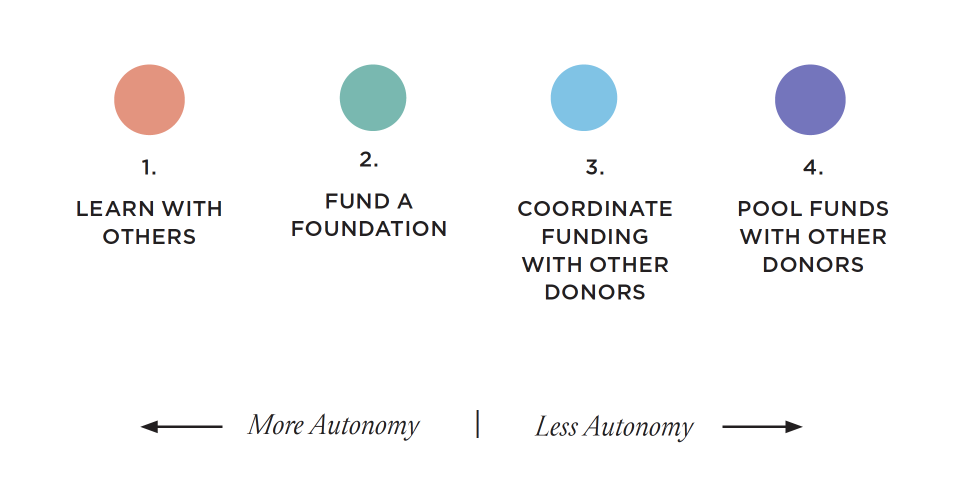
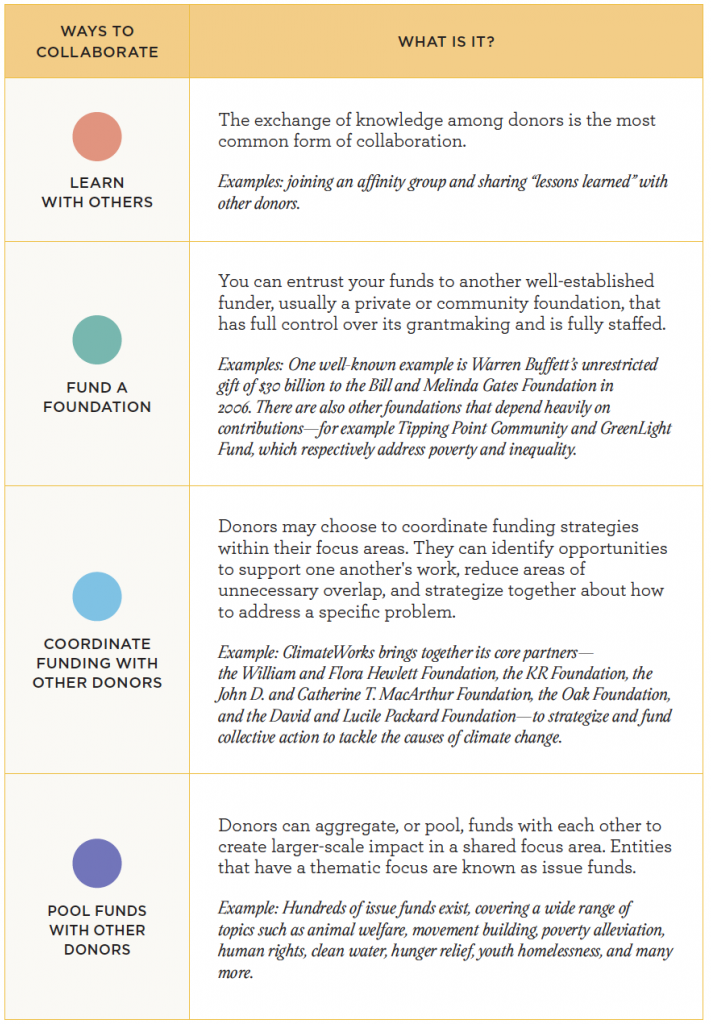
-
2.5 LEARN FROM THE COMMUNITIES YOU SEEK TO SERVE
Participatory grantmaking aims to democratize philanthropy by shifting the decision-making power from donors to the communities being served. It empowers community members by recognizing the unique importance of their lived experiences in making good decisions about how the community should be served. The following chart represents different ways high-capacity donors can practice participatory grantmaking.
The grantmaking process itself is a key outcome of participatory grantmaking. The goal is to achieve an inclusive democratic process and, as such, is driven by values rather than by strict rules. Thus there is a lot of variation in how participatory grantmaking is practiced. Sometimes the process is completely led by peers and does not include any trustees or foundation staff. Sometimes, the grantmaking decision is led by peers but the donors and staff are involved in other aspects. Other times, peers and donors both participate in making grant decisions.
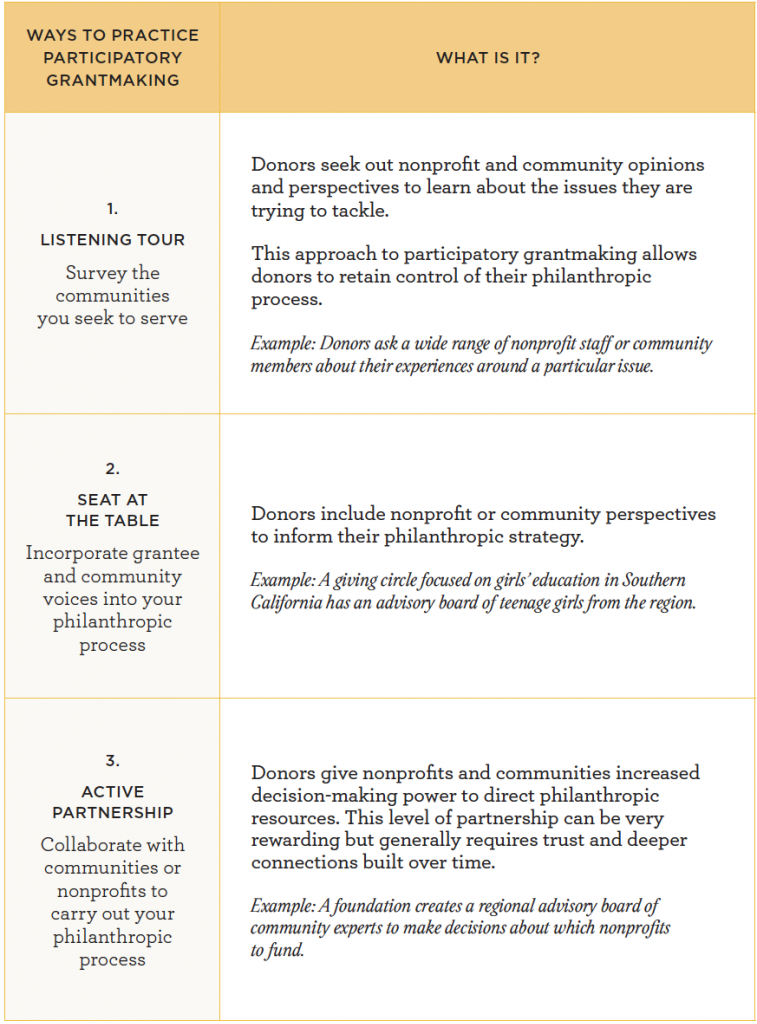
One key benefit of participatory grantmaking is that it strengthens trust and credibility of the donors since it democratizes the grantmaking process. As participatory grantmaking expert Cynthia Gibson points out, some proponents of participatory grantmaking believe this process leads to better decisions. Additionally, this process promotes diversity, equity, and inclusion; provides participants with an opportunity to network, build their leadership skills, and increase community engagement; and can often help nonprofits identify new initiatives and take more risks.
While it has many benefits, participatory grantmaking may not always be the best approach for funders. Funders are still fiscally and legally responsible for their funding decisions and as a result, some traditional funders believe that they shouldn’t cede control of decision-making. Additionally, for some organizations operating at a national level, engaging in participatory work may be overly challenging if they serve multiple constituencies and have fixed existing organizational policies and structures. Participatory grantmaking can also be resource-intensive. Coordinating among and supporting multiple community volunteers can increase the length of the process, and ensuring representativeness can be a challenge. This approach can also lead to conflicts of interest among community volunteers or between the organization and the community volunteers.
If you are interested in learning more about participatory grantmaking or reading Cynthia Gibson’s work, please see the Additional Resources: Section 2 at the end of this toolkit.

